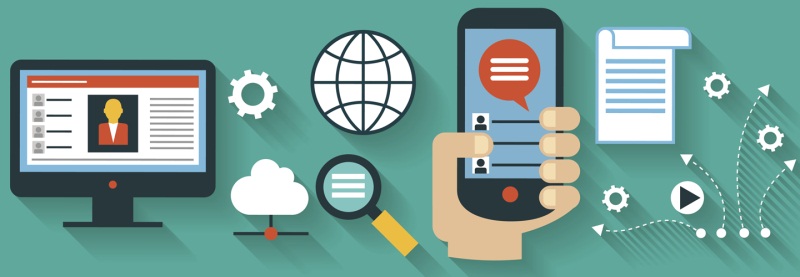What Is Mobile Collaboration?
Technology has become an important asset in our daily lives which without, we can barely survive or would rather find it difficult to do so. Technology grows every day with new trends coming up in an effort to make life easier. Today, the world has become a ‘village’ especially due to advancements in communication technology. Mobile collaboration is one of the newest trends in the communication industry.

Now we will tell you more about mobile collaboration in three parts.
Part 1: Mobile Collaboration Definition
Part 2: Benefits of Mobile Collaboration
Part 3: Tips for Efficient Mobile Collaboration
Part 1: Mobile Collaboration Definition
What is mobile collaboration? It’s a process of communication that utilizes application of electronic devices and the respective software enabling people in different geographic locations work together at various levels. Etymologically, mobile collaboration is a combination of the words,‘mobile’ and ‘collaboration’ which would imply working together in a smart and better way through the use of mobile devices. Some of the electronic devices used include mobile smartphones, tablets, laptops among others. Several ways of engaging in the mobile collaboration include instant messaging, emails and video conferencing. There are many video conferencing service providers such as Skype and ezTalks, and Slack, etc. Through this technology-based process, geographical barriers have been overcome since people appear to be close to each other.Part 2: Benefits of Mobile Collaboration
The following are some of the advantages of mobile collaboration:
Efficient. It is a more efficient way of working together especially where all the people involved have access to mobile devices. This is because they do not need to be physically present so that they can perform the intended activities.
Convenient. It is convenient as one can work from any location and at any time as long it suits him or her and provided there is access to the internet.
Time-Saving. There is no time spent in traveling in order to arrive at the venue of the meeting. This time can be spent by engaging in other productive activities.
Quick Exchange of Information. Mobile collaboration guarantees the fast exchange of information to many people, for example, if one wanted to communicate on the possibility of an event or an activity to a lot of people who are indifferent, one can do that easily and fast by making the communication via email or instant messaging.
More Engagement. Allows more engagement among colleagues, with their supervisors and their customers for a decentralized organization. This is because it allows delegation of duties, holding events, interaction among employees and general communication within the organization. A mobile event app can further boost this engagement by enabling real-time interactions, networking opportunities, and instant updates during company events or team meetings.
Economical. It is more economical as there are no commuting costs incurred for one to participate in an event, discussion or any activity of his or her organization. Also, from a business perspective,mobile collaboration ensures execution of tasks at low costs, enabling the business to offer its products at affordable prices. Therefore, the business is able to compete favorably.
Improved Communication. People are able to deliver information as if they were doing it in person. For example, in a video-conferencing meeting, one can see aspects of body language from any other participant.
Part 3: Tips for Efficient Mobile Collaboration
Be Familiar with Mobile Collaboration Tools. Analyze your tools and methods of collaboration currently in use. It involves knowing the people you connect with, the nature of your work, the devices they are using and their location as well. At this point, you can know on what to improve on.
Determine Your Task. Determine the kind of task you want to achieve using mobile collaboration. This helps in choosing the appropriate collaboration tool for certain task.
Guarantee Security and Confidentiality. One should consider the most secure and confidential tool for use based on one’s task. This is to avoid problems arising due to exposure of shared information to people not intended.
Choose Better Mobile Devices. One should re-visit the capabilities of devices you are using. In case your devices have the capabilities you require, then you need to stick to them. In absence of this, you may consider purchasing new gadgets.
Determine Right Collaboration Apps. Besides choosing the correct gadget, you also need to take quality time in choosing an appropriate app that will help you work with others efficiently yet in different geographical locations. This, of course, should be based on nature of the task.
Use Simple Mobile Collaboration Methods. The method of mobile collaboration should be kept as simple as possible for ease of use by all those involved. This should be considered as long as the method serves the intended purpose.
Choose Correct Communication Means. The type of communication one wants to deliver should guide him or her on the collaboration tool to use. For example, for a formal communication or where one intends to send documents one may prefer email over a text message. For a quick response one would choose making the communication through a text or instant messaging.
Send Proper Shared Documents. In case you are sharing documents, know when to make them editable or uneditable. Where one doesn’t require modification of the document, he/she should send them as PDF.
Conclusion
Due to globalization and need for outsourcing, mobile collaboration is becoming popular. The effect of this has been tremendous in industries such as education, healthcare, energy and manufacturing industries.